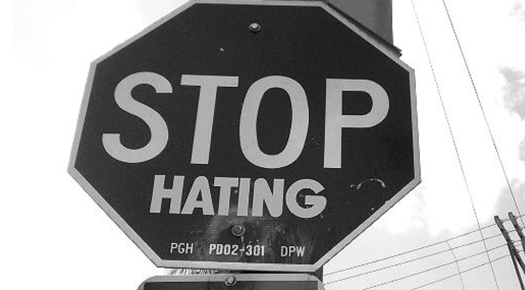
Last December, a couple were killed in a police gun battle hours after they took part in a mass shooting that left at least 14 people dead and 17 wounded in San Bernardino, California. Syed Farook and his partner Tashfeen Malik, aged 28 and 27, were shot dead by police officers in a car chase through the city. Farook left a gathering of fellow public health employees of San Bernardino County where he worked, only to return with his partner, both heavily armed. Investigators said the assailants were inspired by the Islamic State group.
Now, after a year from that terrible event, some people in San Bernardino are trying to find a way to show their support for Muslim community by writing messages of peace. Karen Fagan, together with her daughters, is making an effort to unify Muslims and Christians in a common struggle to overcome mutual lack of understanding. Harry Bowman, Karen’s husband, was killed on that fateful day along with 13 other innocent people.
Victims’ families, such as Bowman’s, encouraged dialogue and tolerance among different communities, fearing the violence could divide them. On the other side, the Muslim community undertook its own campaign to educate neighbors about Islam. Clergy organized interfaith talks. Hate crimes against Muslims increased last year and president-elect Donald Trump used heated rhetoric about Muslims on the campaign trail. The Somali-born student at Ohio State named as assailant drove his car into a crowd of people before stabbing bystanders with a butcher knife and it is just another case that is stirring up intolerance against Muslims.
“I think as a community it felt good not to be divided,” said Brian Levin, a professor at California State University, San Bernardino who studies hate crimes. “And I think in other parts of the country they had the luxury of hating when we didn’t.” Residents of San Bernardino say their worst fears about a backlash in their own community never materialized.
In the day after attack, some things in San Bernardino did change. Muslim women wearing headscarves said they were stared at in public, and some even changed their attire out of fear. A Muslim university professor reported to police receiving threatening emails. But community members took action to stop spurring a rise in hate crimes in their city. Muslim residents held vigils for the victims and developed an 11-point campaign rejecting terrorism that members of diverse faiths could agree on, starting with the local police chief.
In the city of San Bernardino those peace actions have contributed to the maintenance of the community. The question is whether such a model of behavior can be a solution to intolerance in other parts of America too.
Photo Credits: StaticFlickr
